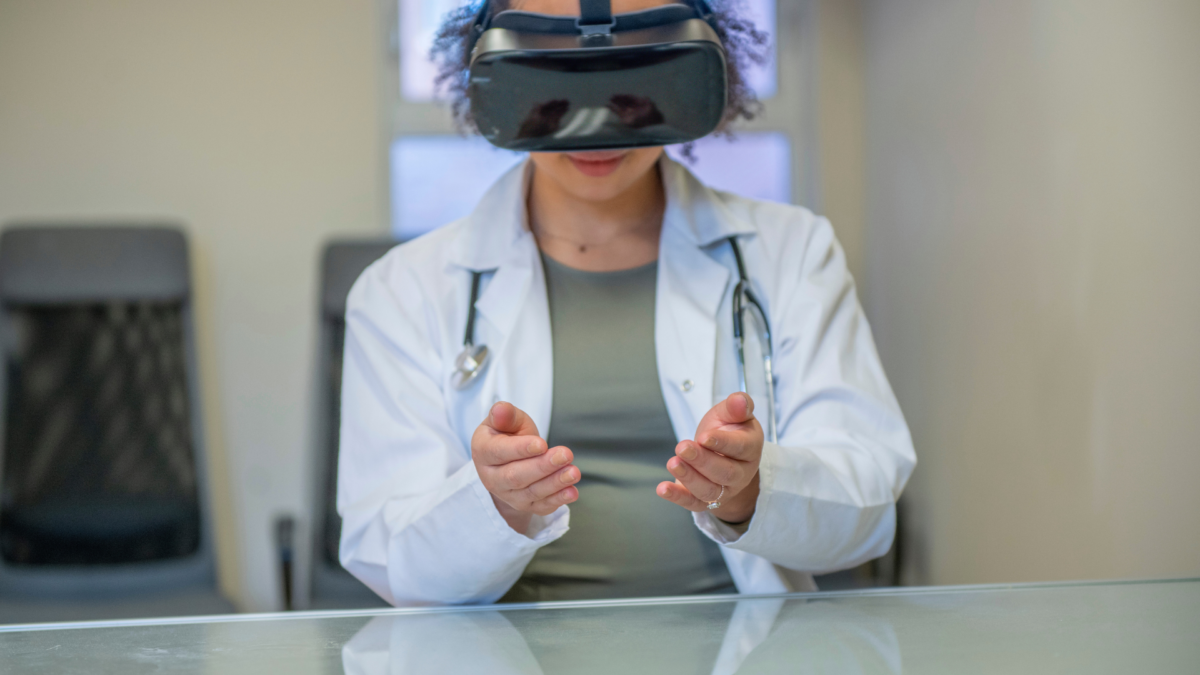Virtual reality (VR) is making significant strides in the field of healthcare, transforming how medical professionals approach training and patient care. VR technology allows for immersive simulations that can enhance surgical training, patient rehabilitation, and even pain management. Healthcare providers are discovering that these tools can improve both the efficacy of procedures and the experience of patients.
As VR continues to advance, its applications in healthcare are expanding. From virtual simulations that help surgeons practice complex procedures to environments designed to ease patient anxiety during treatment, the potential is vast. This technology not only aids in education and training but also supports various therapeutic practices, providing a comprehensive toolkit for modern healthcare.
Integrating VR into healthcare processes holds the promise of better outcomes and improved patient satisfaction. By combining technology with patient care, healthcare professionals are setting a new standard for medical treatment that could lead to significant improvements in overall wellness and recovery.
The Evolution of VR in Healthcare
Virtual reality has transformed from a theoretical concept to an essential tool in healthcare. Its integration has revolutionized treatments, training, and patient engagement. This evolution illustrates the growing role of VR technology within medical settings.
From Concept to Reality
Initially, virtual reality was viewed as a futuristic concept with limited practical application in medicine. In the 1990s, VR systems were primarily explored in research labs and experimental settings. Early applications included simulations for surgical training and rehabilitation.
As technology advanced, VR began to find its way into clinical practices. By the 2000s, improved hardware and software made VR more accessible. Healthcare professionals started using VR to treat phobias, PTSD, and pain management.
Now, VR is embedded in surgical education, allowing students to practice procedures in a safe environment. This progression demonstrates VR’s transition from abstract ideas to real-world applications, making a significant impact on patient care.
Key Technological Advances
Several technological advancements have propelled VR into the forefront of healthcare. One major development is the improvement in VR headsets. Modern headsets are lighter, more comfortable, and offer enhanced resolution. These innovations enhance user experience and immersion.
Software development has also played a critical role. Platforms are now available for creating customized simulations tailored to specific medical scenarios, thereby improving training methodologies. Artificial intelligence integration within VR systems enhances personalization and adaptability. For example, AI can analyze user performance and modify training environments accordingly. Overall, these technological advancements have enhanced engagement and effectiveness, establishing VR as a vital asset in modern healthcare practices.
Applications of VR in Medical Procedures
Virtual Reality (VR) has increasingly found applications in various aspects of healthcare, particularly in medical procedures. Its use enhances the precision of surgeries, improves diagnostic imaging, and offers innovative training simulations for medical professionals.
Enhancing Surgical Precision
VR technology improves surgical precision by allowing surgeons to visualize complex procedures in a three-dimensional space. Surgeons can use VR to simulate surgeries before performing them, helping them to plan their approach meticulously.
Using VR models derived from patient imaging data, such as MRI and CT scans, allows for a detailed view of the anatomy. This preparation can reduce risks during actual surgery and lead to improved patient outcomes. Surgeons can rehearse challenging aspects of the procedure in a risk-free environment, increasing confidence and skill.
Improving Diagnosis with VR Imaging
In diagnostic imaging, VR provides an immersive way to interpret complex scans like MRIs and CTs. By visualizing the scans in a 3D space, medical professionals can identify conditions that may not be apparent in traditional 2D images.
This technology allows clinicians to explore the anatomy interactively. They can rotate, zoom, and manipulate images, making it easier to detect anomalies. Enhanced visualization can lead to more accurate diagnoses and better-informed treatment decisions.
Training and Simulation for Medical Professionals
Training programs utilizing VR simulations create realistic environments for medical professionals to practice their skills. These simulations can replicate surgical theaters and complex procedures without the associated risks.
Medical professionals can engage in hands-on practice, developing their skills through repeated exposure to various scenarios. Trainees can learn from their mistakes in a safe setting, refining their techniques and decision-making abilities. This immersive training can significantly shorten the learning curve and improve overall proficiency in real-life situations.
VR as a Tool for Treatment and Rehabilitation
Virtual reality (VR) has emerged as a transformative tool in healthcare, particularly for treatment and rehabilitation. Its applications in pain management, mental health support, and physical rehabilitation are creating new opportunities for patient care.
Pain Management Techniques
VR is increasingly used in pain management, providing patients with immersive environments that distract from pain perceptions. Techniques include guided imagery and relaxation exercises within VR settings, effectively reducing the need for opioids and other pain medications.
By engaging patients through interactive experiences, VR can help lower anxiety levels. Programs designed to simulate calming environments can aid in pain relief, making procedures like wound care more tolerable. Studies show that patients using VR during intense procedures report significant reductions in pain and discomfort.
Supporting Mental Health and Therapy
In the realm of mental health, VR applications offer innovative therapy options. Exposure therapy, particularly for phobias and PTSD, allows patients to confront their fears in controlled virtual environments.
Therapists can tailor scenarios based on individual needs, helping patients gradually acclimate to their anxieties. This method promotes engagement and can be more effective than traditional approaches. Additionally, VR-based mindfulness and relaxation apps help patients improve coping strategies and reduce stress levels.
Advancing Physical Rehabilitation
VR also plays a significant role in advancing physical rehabilitation. Customized VR exercises can enhance motivation and encourage patients to engage more fully in their recovery processes. The interactive nature of VR provides real-time feedback, allowing patients to adjust their movements and track progress. Programs designed for specific physical impairments guide users through tailored activities, improving mobility and coordination. This adaptive approach can result in better outcomes compared to conventional rehabilitation methods.
Impact of VR on Patient Care and Outcomes
Virtual Reality (VR) is transforming patient care by enhancing experiences, improving treatment engagement, and generating measurable outcomes. By integrating VR technology into healthcare practices, providers can significantly influence patient satisfaction and recovery processes.
Enhancement of Patient Experience
VR technology offers immersive experiences that greatly enhance patient care. For instance, patients in various settings can use VR to distract themselves during painful procedures or lengthy treatments. Veterans undergoing rehabilitation for injuries may engage in VR environments designed to replicate familiar scenarios, aiding their mental adjustment.
In places like Vietnam and Africa, where healthcare resources are limited, VR provides a cost-effective method for delivering mental health therapy. This enhances the overall patient experience and makes treatment more accessible.
Measuring the Success of VR Interventions
Assessing the effectiveness of VR in patient care involves various metrics. Health professionals use patient feedback, pain levels, and recovery times to gauge success. Studies show that patients who utilized VR reported a 25% reduction in anxiety during procedures.
Moreover, clinical trials documented improved adherence to treatment plans. This demonstrates that the immersive nature of VR keeps patients engaged in their care, positively influencing outcomes over conventional methods.
The Future of VR in Healthcare
Advancements in VR technology promise exciting possibilities for healthcare. As augmented reality (AR) merges with VR, practitioners can visualize complex medical data interactively, enhancing precision in treatments. Additionally, remote VR sessions could cater to patients in underserved regions, ensuring they receive timely care.
Future applications may include medical training, allowing healthcare professionals to practice surgical procedures in a safe, simulated environment. This could further elevate patient outcomes and overall healthcare efficiency.








